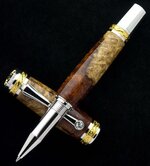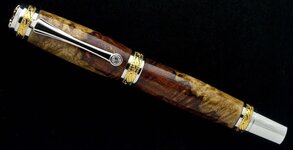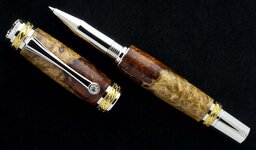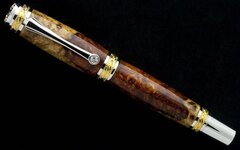BEAUTIFUL! I just love the two-toned Amboyna. It's one of my favorites.
we have done the finish both ways - both waiting for the CA to "cure" and also jumping right into sanding/polishing. We haven't really noticed a procedural problem with either method. Although it's nice to not wait so long to figure out if you have to re-finish them!! (we've had issues with our finishes of late, so most end up getting refinished)
another "how do you do it" question: do you glue up your tubes in the morning before you turn them, or do you "plan ahead" and glue them up the night before?? Do you use CA to glue in tubes?
(We tend to do ours in batches, drilling out a bunch then gluing up a bunch, and turning them when we get the chance.... which for me hasn't been that often - my youngest daughter has been off her schedule for naps for a while, but today she took a 3 hour nap, so I guess I
could have done something more productive.....but it's HOT in my garage, so I didn't. :biggrin

 . So I thought I'd work on pens and catch up on reading while everyone is gone. So..this is my first one for today:wink:. It Amboyna Burl with Sapwood/Two tone on a 22K/Rhodium Majestic Rollerball. Had fun making it. Comments welcome but most of all thanks for just looking. Doc
. So I thought I'd work on pens and catch up on reading while everyone is gone. So..this is my first one for today:wink:. It Amboyna Burl with Sapwood/Two tone on a 22K/Rhodium Majestic Rollerball. Had fun making it. Comments welcome but most of all thanks for just looking. Doc




